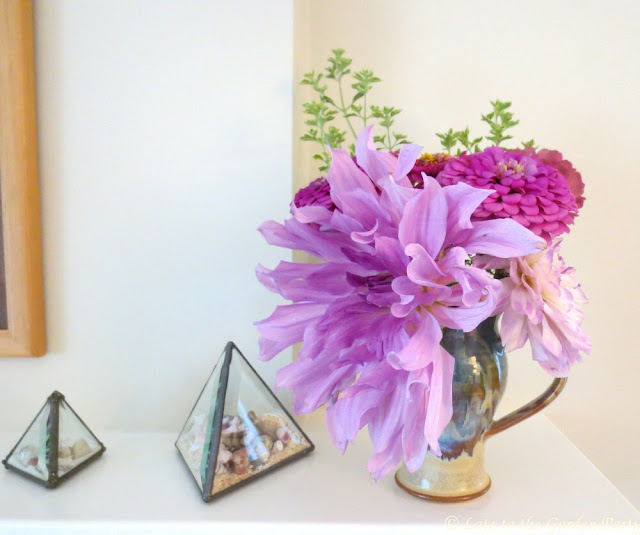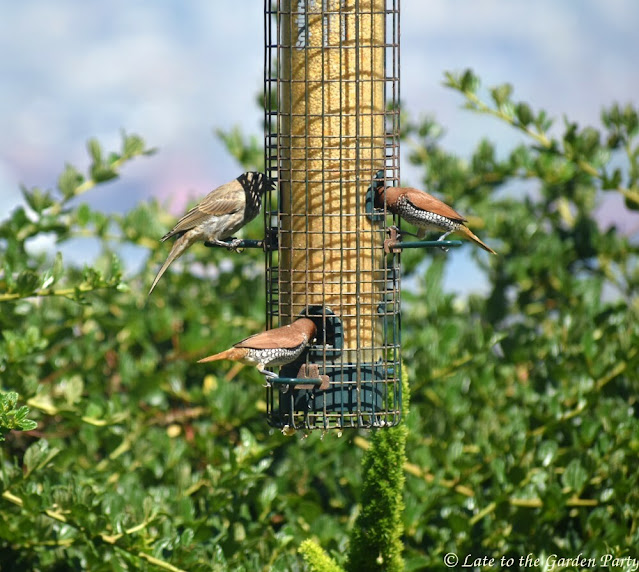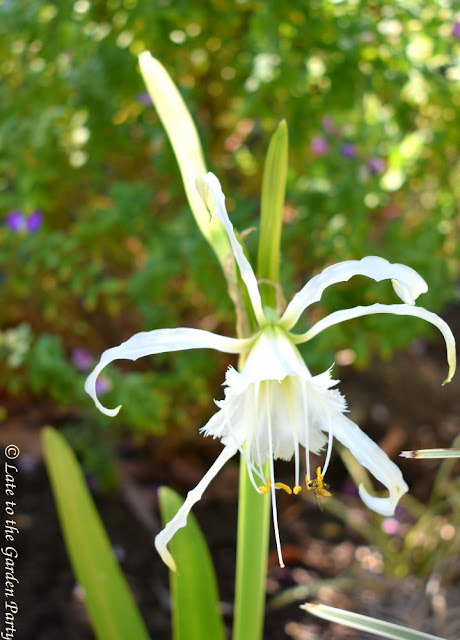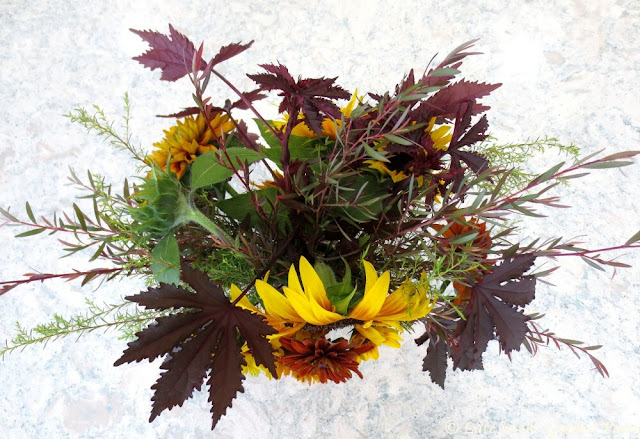I'm suffering from cabin fever. It's been too hot to do much of anything outside for most of the past week. I've gotten in an hour or so of gardening during the early morning and the early evening hours now and then but my activities have been largely limited to hand-watering container plants. I started one project I hadn't planned to tackle until cooler temperatures return but I've made minimal progress. Since temperatures soared into the mid-90sF and above I haven't even walked the neighborhood in several days.
With the exception of delivering emergency water rations on a periodic basis, I've spent too much time staring out the window thinking about what needs to be done in the garden. Over a two-day period I was briefly diverted by spying on the garden activities of a homeowner in the neighborhood across the canyon from us. This homeowner (who I've never met) has demonstrated an obsession with his lawn over the ten plus years we've lived here. I've seen him change out his sod twice. The second time, I thought he must be replacing it with artificial turf, only to witness a crew installing new sod. When another crew showed up, I assumed he was doing that again but I was wrong.
 |
| I didn't see them remove the sod but, when they brought in a small mountain of gravel, I thought maybe they were creating a patio extension |
 |
| The next day I saw a team unrolling what looked like a large rug. They spent hours cutting it to fit the space and rolling it flat. |
On my brief forays outside, I've collected a variety of insect bites. The spiders are out in force and, every morning when I clean up Pipig's catio, I carry a big stick, waving it in front of me to take down any webs I'd otherwise walk right into. I didn't anticipate I'd have to contend with webs inside the house as well but an ambitious spider managed to hitchhike in with flowers I cut on Sunday.
Staring out my office window, I've seen butterflies, including giant swallowtails and cloudless sulphurs, as well as hummingbirds, but I repeatedly failed to get photographs of them every time I've hustled outside with my camera.
 |
| The lazy pace of the bumble bees makes them easier to catch on camera |
 |
| and the fiery skippers were more accommodating as well |
On the bright side, the seed-sown sunflowers in my cutting garden are now bursting into bloom one after another.
 |
| The majority of the sunflowers in this bed are Helianthus annuus 'Joker'. As a side note, filling the backyard bird feeders has not stopped the finches from pecking at the large sunflower leaves. |
I also noticed that bulbs planted in the area next to our garage are starting to bloom for the first time.
Even though I created three floral arrangements earlier this week, I felt compelled to cut more flowers while watering my raised planters on Monday morning rather than risk losing them to the heatwave.
 |
| The mug contains Dahlias 'Lavender Ruffles' and 'Mikayla Miranda' as well as Zinnia elegans 'Benary's Giant Purple' and the foliage of Prostanthera ovalifolia 'Variegata' |
Today, temperatures are expected to drop as much as ten degrees from yesterday's high of 97F, then fall again on Thursday, settling into the mid-70sF for the following week. I'm hoping that forecast holds.
 |
| Pipig could care less |
All material © 2012-2023 by Kris Peterson for Late to the Garden Party











































